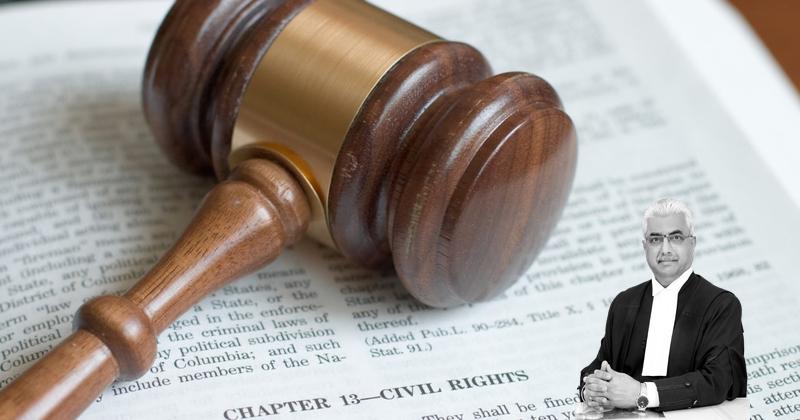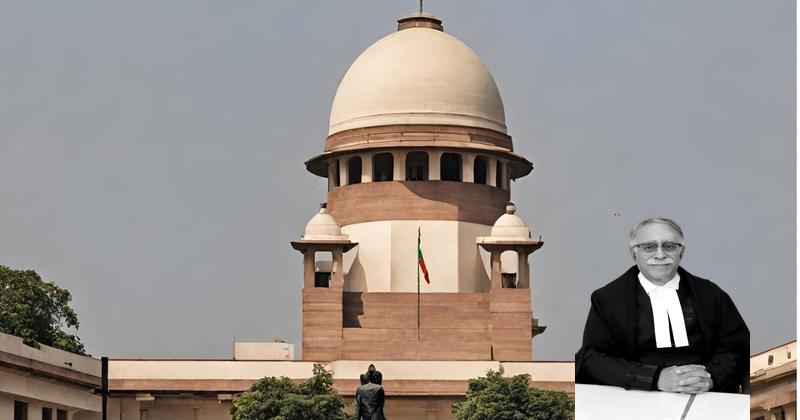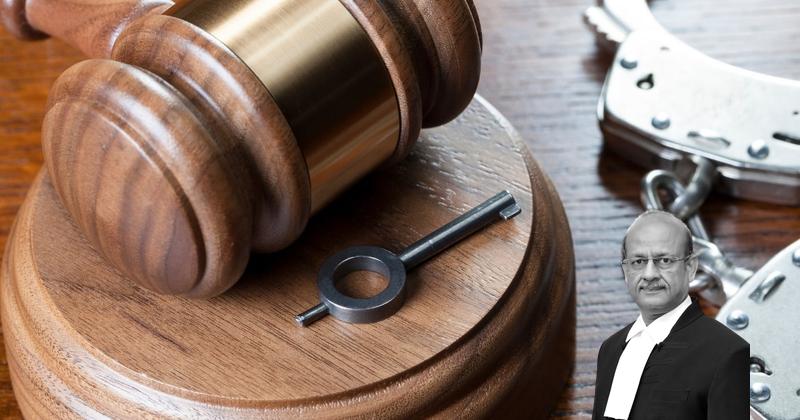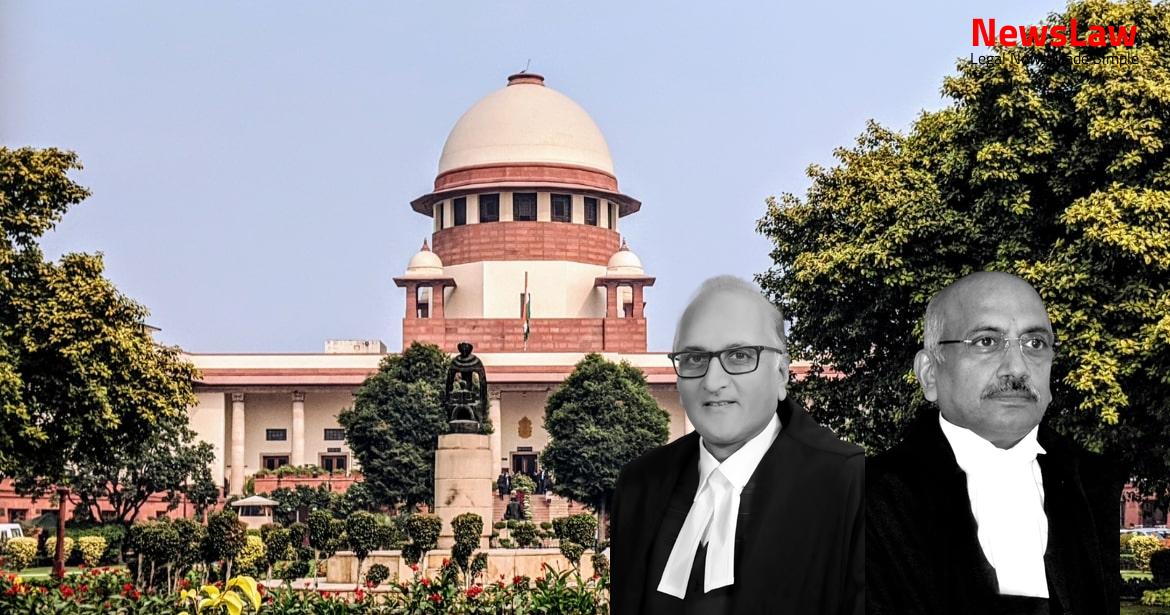By the said judgment, the High Court confirmed the judgment and order of conviction and sentence dated 31 2 July 2015 passed by the Court of Additional Sessions Judge, Court No 3, Muzzaffarnagar (hereinafter referred to as “trial court”) in Sessions Case No 09/2005 with Sessions Case No 838 of 2005 and 10/2005, in respect of appellant – Madan, while commuting the sentence of capital punishment to life imprisonment in respect of appellant – Sudesh Pal. When Vimla Devi came to be elected as Gram Pradhan along with Lokendra (PW-1), who also came to be elected as a member of the Gram Panchayat, appellant Madan and his family members bore a grudge with Lokendra (PW-1) and others on account of the feeling of jealousy. As a result of the said firing, Satendra and Sunil fell down on ‘ Khadanja ’. Following which, when the villagers were taking Rizwan, Rihan, Masooq Ali, Sukhpal Singh (PW-2) and Mumtaz Khan (PW-5) to the 5 hospital; Rizwan, Rihan and Masooq Ali succumbed to their injuries and died on the way and their bodies were accordingly kept in their houses.
He recorded the statement of Lokendra (PW-1) and proceeded to the place of the incident in front of the house of Rashid s/o Mustafa where he found the dead bodies of Satendra, Jai Singh (PW-8) and Sunil in a pool of blood. Three empty cartridges of 12 bore 9 mm were found and taken into possession in the presence of witnesses Anil Kumar (PW-3) s/o Chandrapal Jat and Sri Dheer Singh s/o Prahlad Singh. After Raghunandan Singh Bhadauria (PW-24) was transferred, the investigation was taken over by Surajpal Singh (PW-23), SHO on 18 October 2003. Surajpal Singh (PW-23) thereafter recorded the statements of other witnesses and also raided the house of the accused persons. He then proceeded to the place of the incident along with police personnel for the recovery of weapon; whereupon, a country-made pistol and the gun used in the incident were recovered at the instance of accused persons Ishwar and Kanwar Pal. After the chargesheet was submitted by Bahadur Singh Chauhan (PW-17) against 10 appellant Madan along with other accused persons, namely, Kanwar Pal and Ishwar; the investigation was taken over by the then S.H.O. Wound of entering of 8 firearms 20 cm X 19 cm towards left side of chest which was in deep ranging from 12 cm X 12 cm from the surface of the chest. Wound of exit of firearm in the area of 33 cm X 21 cm, towards back side of the chest and was in deep from 2 cm X 1.5 cm to 1cm X 1 cm in the cavity of the chest. Wound of exit of firearm measuring 2 cm X 1.5 cm in deep in the cavity of chest, towards right side of chest beneath 11 cm of armpit and 14 cm away from the nipple in the position of 9 hrs. Wound of exit of firearm 1 cm X 1 cm in deep of the cavity of the chest towards right side of the chest, 12 cm beneath of imprear angle of Scapula and 15 cm away from the middle line. Wound of entering of firearm 12 cm X 12 cm in deep of the bone towards the back side of the right 15 shoulder and 7 cm beneath the upper portion.
Wound of exit of firearm 2 cm X 1 cm in deep of cavity of the chest towards back side of left side chest, 16 cm beneath the scapula corresponding the injury. 2.17
Also Read: https://newslaw.in/case-type/civil/striking-down-of-clause-4-9-in-appointment-guidelines/
Subsequently, accused Kunwar Pal absconded and the trial commenced against appellant Madan and co-accused Ishwar in Sessions Trial No 09 of 2005, against appellant Sudesh Pal in Sessions Trial No 838 of 2005 and against accused Ishwar in Sessions Trial No 10 of 2005 for the charge 17 under Section 25 of the Arms Act, 1959 arising out of Case Crime No 204 of 2003. 2.19
At the conclusion of trial, the trial court vide judgment dated 31 July 2015 held the accused persons guilty of committing the murder of six persons and accordingly convicted the appellants herein along with accused Ishwar for offences punishable under Sections 148 and 449, Section 302 read with Section 149, Section 307 read with Section 149, 18 Section 323 read with Section 149 of IPC, while accused Ishwar was also additionally convicted for the offence punishable under Section 25 of the Arms Act, 1959.
The trial court sentenced each of the three accused persons 3 years rigorous imprisonment under Section 148 of IPC; life imprisonment under Section 449 and Section 307 read with Section 149 of IPC and one year rigorous imprisonment under Section 323 read with Section 149 of IPC. We have heard Shri Anand Grover, learned Senior Counsel appearing for appellant Madan in Criminal Appeal Nos. 1381-82 of 2017, Shri Manish Kumar Vikkey, learned counsel appearing for appellant Sudesh Pal in Criminal Appeal No. Though in his statement recorded under Section 161 Cr.P.C., he stated that he was with a group of people, but in cross-examination he admitted that he was not walking along with the group, but was behind them by around 10 yards from the cross roads (towards the north) when the group of people reached Rashid’s house. Shri Grover submitted that there are also substantial contradictions in the testimony of Lokendra (PW-1) which casts doubt with regard to his presence at Rizwan’s house.
It is submitted that non-examination of Mehmoona Begum, mother of deceased Rizwan and Rihan, who was present at the place of incident, also casts doubt about the presence of Irshad Khan (PW-7) at the place of incident. Shri Grover submitted that the presence of Harpal Singh (PW-10) at the place of incident is also doubtful.
Insofar as Lokendra (PW-1) is concerned, Shri Grover submitted that the testimony of the said witness suffers from material omissions with regard to involvement of appellant Madan in the incident. The learned Senior counsel therefore submitted that Sudhir (PW-11) would fall in the category of a chance witness and the testimony of such a witness cannot be relied upon without there being corroboration from any independent testimony. Lokendra (PW-1) and Sudhir (PW-11) are related witnesses of deceased Ram Kishan and Satendra. Shri Grover submitted that the injured eye witnesses Sukhpal Singh (PW-2), Mumtaz Khan (PW-5) and Jai Singh (PW-8) have not supported the prosecution story alleging the involvement of the present accused.
It is submitted that as per the evidence of Lokendra (PW-1), Irshad Khan (PW-7) and Harpal Singh (PW-10), the police were present at the scene prior to the report being lodged at the police station i.e. However, the inquest report records the presence of bodies at the site of shooting i.e., at the village main road, Masooq Ali’s house and Deputy Pradhan’s house. Shri Grover submitted that, though independent witnesses were available, for the reasons best known to the prosecution, they have not been examined. Shri Grover, in the alternative, submitted that even if this Court does not interfere with the conviction, the capital punishment awarded to appellant Madan is not sustainable. Shri Grover submitted that even the alleged motive is far-fetched. Shri Chahar, learned Senior Counsel appearing on behalf of the State submitted that no interference would be 33 warranted with the concurrent orders of trial court and the High Court.
It is submitted that the incident was such which caused terror in the society and the High Court and the trial court have rightly held the present case to be the rarest of rare cases so as to award death penalty to the accused. After indiscriminate firing by the accused persons, Ram Kishan and Sukhpal Singh (PW-2) ran away to save their lives and Ram Kishan entered the house of Rizwan. The accused persons followed them and entered into the house of Rizwan and fired shots at Ram Kishan, Rizwan and Rihan. Lokendra (PW-1) further stated that Ram Kishan entered into Rizwan’s house to save his life and the accused persons also entered Rizwan’s house after him. Lokendra (PW-1) also deposed that Mahipal, a witness to this incident, was also murdered about two and half months ago in the vicinity of the Jwalapur Police Station, Haridwar, in which, Rajveer, Ramvir, Rambhajan, sons of Ishwar and Ishwar were made the accused persons. Irshad Khan (PW-7), in his deposition, has stated that, on the date of the incident, when he along with his wife Mehmoona Begum and his sons Rizwan and Rihan were present in his house, suddenly Ram Kishan entered his house in an injured condition. However, in his cross-examination itself, he has explained thus: “Lokendra of my village told me that he would lodge the report at the Police Station. It is further to be noted that the testimony of Lokendra (PW-1) and Irshad Khan (PW-7) is consistent inasmuch as even Lokendra (PW-1) stated that he had gone to the house of Rizwan after Ram Kishan followed by the accused persons went to the house of Rizwan.
He stated that Satendra, Sunil and Sukhpal Singh (PW-2) were shot when the accused opened fire. He stated that he saw Ram Kishan, Sukhpal Singh (PW-2), Satendra, Sunil, Jai Singh (PW-8) going in the street in front of him, in front of Mustafa’s house. The testimony of these witnesses is sought to be attacked on the ground that they are interested witnesses and there are inconsistencies in their evidence. In the present case, both the High Court and the trial court have meticulously scrutinized the evidence and found the testimony of the eye witnesses trustworthy and reliable. The rustic witness as compared to an educated witness is not expected to remember every small detail of the incident and the manner in which the incident had happened more particularly when his evidence is recorded after a lapse of time. We are further of the considered view that though Irshad Khan (PW-7) is a sole witness insofar as the firing on deceased Ram Kishan, Rizwan and Rihan is concerned, his testimony is cogent, reliable and trustworthy and can be made 44 basis for coming to a conclusion that it is the present appellants along with other accused who have caused the death of deceased Ram Kishan, Rizwan and Rihan. …..Another failing in the judgment is that the High Court has held that the prosecution has failed to prove adequate motive for the commission of the offence without bearing in mind the well settled rule that when there is direct evidence of an acceptable nature regarding the commission of an offence the question of motive cannot loom large in the mind of the court. So far as the issue of motive is concerned, it is a settled legal proposition that motive has great significance in a case involving circumstantial evidence, but where direct evidence is available, which is worth relying upon, motive loses its significance…….” 46. In this respect, we may refer to the observations of this Court in the case of Karnel Singh v. A similar view has been taken by this Court in the case of Shera Singh v.
Attuned to the legislative policy delineated in Sections 354(3) and 235(2), propositions ( iv )( a ) and ( v )( b ) in Jagmohan [(1973) 1 SCC 20 : 1973 SCC (Cri) 169 : Section 2 SCR 541] shall have to be recast and may be stated as below: “( a ) The normal rule is that the offence of murder shall be punished with the sentence of life imprisonment. If the court finds, but not otherwise, that the offence is of an exceptionally depraved and heinous character and constitutes, on account of its design and the manner of its execution, a source of grave danger to the society at large, the court may impose the death sentence. Georgia [33 L Ed 2d 346 : 408 US 238 (1972)], in general, and clauses 2 ( a ), ( b ), ( c ) and ( d ) of the Penal Code, 1860 (Amendment) Bill passed in 1978 by the Rajya Sabha, in particular, Dr Chitale has suggested these “aggravating circumstances”: “ Aggravating circumstances : A court may, however, in the following cases impose the penalty of death in its discretion: ( a ) if the murder has been committed after previous planning and involves extreme brutality; or ( b ) if the murder involves exceptional depravity; or ( c ) if the murder is of a member of any of the armed forces of the Union or of a member of any police force or of any public servant and was committed— ( i ) while such member or public servant was on duty; or ( ii ) in consequence of anything done or attempted to be done by such member or public servant in the lawful discharge of his duty as such member or public servant whether at the time of murder he was such member or public servant, as the case may be, or had ceased to be such member or public servant; Secondly, it has to be realized that every member of the community is able to live with safety without his or her own life being endangered because of the protective arm of the community and on account of the rule of law enforced by it. When ingratitude is shown instead of gratitude by “killing” a member of the community which protects the murderer himself from being killed, or when the community feels that for the sake of self-preservation the killer has to be 51 killed, the community may well withdraw the protection by sanctioning the death penalty. For instance when ( a ) a hired assassin commits murder for the sake of money or reward ( b ) a cold-blooded murder is committed with a deliberate design in order to inherit property or to gain control over property of a ward or a person under the control of the murderer or vis-a-vis whom the murderer is in a 52 dominating position or in a position of trust, or ( c ) a murder is committed in the course for betrayal of the motherland. When the victim of murder is ( a ) an innocent child who could not have or has not provided even an excuse, much less a provocation, for murder (b) a helpless woman or a person rendered helpless by old age or infirmity ( c ) when the victim is a person vis-a- vis whom the murderer is in a position of domination or trust ( d ) when the victim is a public figure generally loved and respected by the community for the services rendered by him and the murder is committed for political or similar reasons other than personal reasons.” 53 55.
Also Read: https://newslaw.in/case-type/criminal/quashing-of-proceedings-in-criminal-case-no-542-of-2020/
The following propositions emerge from Bachan Singh case [(1980) 2 SCC 684 : 1980 SCC (Cri) 580 : AIR 1980 SC 898 : 1980 Cri LJ 636] : “( i ) The extreme penalty of death need not be inflicted except in gravest cases of extreme culpability. ( b ) Are the circumstances of the crime such that there is no alternative but to impose death sentence even after maximum according weightage to the mitigating circumstances which speak in favour of the offender? The court would consider the cumulative effect of both these aspects and normally, it may not be very appropriate for the court to decide the most significant aspect of sentencing policy with reference to one of the classes under any of the following heads while completely ignoring other classes under other heads.
( 2 ) The offence was committed while the offender was engaged in the commission of another serious offence. ( 8 ) The murder or the offence was committed to prevent a person lawfully carrying out his duty like arrest or custody in a place of lawful confinement of himself or another. ( 5 ) The circumstances which, in normal course of life, would render such a behaviour possible and could have the effect of giving rise to mental imbalance in that given situation like persistent harassment or, in fact, leading to such a peak of human behaviour that, in the facts and circumstances of the case, the accused believed that he was morally justified in committing the offence. Principles ( 1 ) The court has to apply the test to determine, if it was the “rarest of rare” case for imposition of a death sentence. When Masooq Ali, after hearing the sound of firing, came out from his house, the accused persons shot fire at him also.
However, the 59 appellants and the other accused followed them and went inside the house of Rizwan and fired shot at Ram Kishan. Ram Kishan, who sought shelter in Rizwan’s house and Rizwan and Rihan who tried to 60 protect Ram Kishan were also brutally killed. Ratan Singh
[(1976) 3 SCC 470 : 1976 SCC (Cri) 428] which in turn quotes a passage from the Constitution Bench decision in Gopal Vinayak Godse [AIR 1961 SC 600 : (1961) 3 SCR 440]. … A sentence of transportation for life or imprisonment for life must prima facie be treated as transportation or imprisonment for the whole of the remaining period of the convicted person’s natural life.’ 62 The Court further observed thus: (AIR pp. … The question of remission is exclusively within the province of the appropriate Government; and in this case it is admitted that, though the appropriate Government made certain remissions under Section 401 of the Code of 63 Criminal Procedure, it did not remit the entire sentence. In other words, this Court has clearly held that a sentence for life would ensure till the lifetime of the accused as it is not possible to fix a particular period the prisoner’s death and remissions given under the Rules could not be regarded as a substitute for a sentence of transportation for life.” (emphasis supplied)
Further, in para 23, the judgment in Shri Bhagwan [(2001) 6 SCC 296 : 2001 SCC (Cri) 1095] observed as follows: (SCC pp.
Union of India [(1981) 1 SCC 107 : 1981 SCC (Cri) 112] a Constitution Bench of this Court reiterated the aforesaid position and observed that the inevitable conclusion is that since in Section 433-A we deal only 64 with life sentences, remissions lead nowhere and cannot entitle a prisoner to release.
Also Read: https://newslaw.in/case-type/criminal/abuse-of-process-of-law-a-case-of-delayed-fir-filing/
The legal position as enunciated in Pandit Kishori Lal [(1944-45) 72 IA 1 : AIR 1945 PC 64], Gopal Vinayak Godse [AIR 1961 SC 600 : (1961) 3 SCR 440], Maru Ram [(1981) 1 SCC 107 : 1981 SCC (Cri) 112], Ratan Singh [(1976) 3 SCC 470 : 1976 SCC (Cri) 428] and Shri Bhagwan [(2001) 6 SCC 296 : 2001 SCC (Cri) 1095] and the unsound way in which remission is actually allowed in cases of life imprisonment make out a very strong case to make a 65 special category for the very few cases where the death penalty might be substituted by the punishment of imprisonment for life or imprisonment for a term in excess of fourteen years and to put that category beyond the application of remission. If the Court’s option is limited only to two punishments, one a sentence of imprisonment, for all intents and purposes, of not more than 14 years and the other death, the Court may feel tempted and find itself nudged into endorsing the death penalty.
Case Title: MADAN Vs. THE STATE OF UTTAR PRADESH (2023 INSC 990)
Case Number: Crl.A. No.-001381-001382 / 2017



